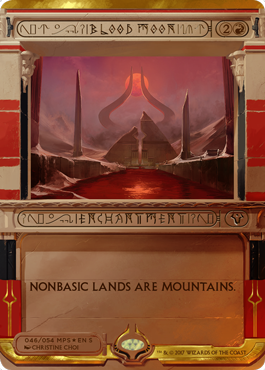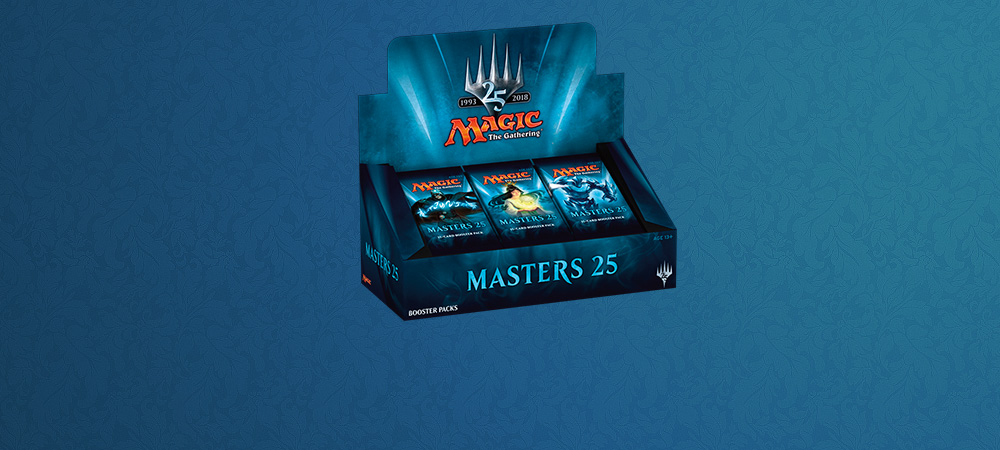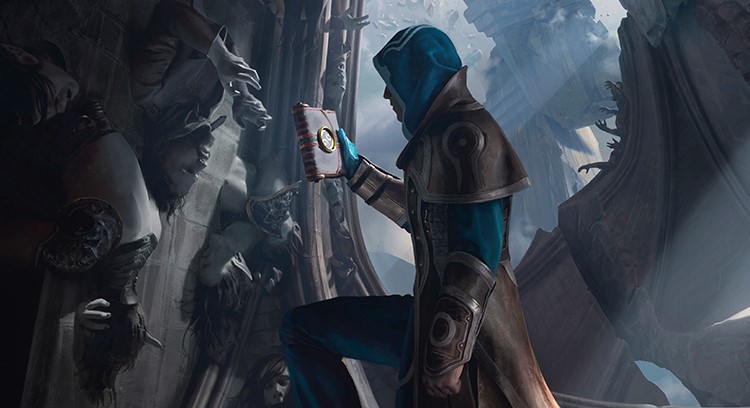It’s hard to believe that I’ve been playing Magic: The Gathering for twenty five years. I still remember my university girlfriend coming home with a small pile of starter decks and the rabbit hole we ended up diving down for the next few months. And while my interest in the game has ebbed and flowed with the years, I’m happy to find myself here on the cusp of this major milestone fully invested in the game we all know and love.
Now coming off the confusing and disappointing reception of the Iconic Masters set just a few months ago, it would seem that WoTC are on the hot seat to deliver an outstanding set as the flagship product for their 25th anniversary.
From a financial perspective it is a useful exercise to try to forecast which cards might be included in this set so that you can decide what you might need to do about it.
Prior Lessons
In terms of the Expected Value of this set, I am using my modeling for Modern Masters 2017 (and to a lesser extent other Masters sets), as I believe it is likely to be the closest in terms of overall value and composition to M25. My previous modeling tracked the value of the $1+ rares and mythics in MM17 set a month or so before the set was released and for several months thereafter. To predict what may happen with the value of cards included in M25, let’s see what happened with MM17.
In early 2017, the fifteen mythics from MM17 had a market value total of around $470 USD, with an average price tag of $30 USD. By late April of 2017, the value of those cards had dropped to just $280, for a localized loss of about 40%. Fast forward to today, and those same mythics are now back up to $390 or so. This is an interesting figure, because while it still represents a drop of 17% from pre-reprint value, it also represents a gain of about 40% from the post-reprint lows a few months after the set dropped.
What does this tell us? Well, for one, it probably didn’t make sense to sell mythics into the reprint, especially if you needed the cards in question in decks. If you had sold a basket of mythics at $470,(and assuming you could have sold all of them quickly enough) you would have netted about 82% of that after fees and shipping, so perhaps $385, which is just about where your cards would be back up to right now, a year later. Now, if you were really on the ball, which would be tough to pull off practically speaking, you could in theory have taken that $385 and bought the same basket three months later at $280, and netted yourself an extra $100 in value or so. That’s a spare Liliana of the Veil if you’re really hustling, but for many players holding through the storm would have been a more reasonable result.
That being said, buying key cards at the bottom was a strong move in isolation, since 14 of 15 mythics have appreciated at least 10% from that point, with eight of those cards appreciating as much as 75% (LOTV, Cavern of Souls, Snapcaster Mage, Craterhoof Behemoth, Temporal Mastery, Olivia Voldaren, Past in Flames). That’s a pretty good result if you can find the bottom this time around and things play out similarly.
Now what about the rares from Modern Masters 2017?
Well, the if we look at the 25 most pricey rares from the set (of 54), we note that the pre-reprint cost of that basket of cards was close to $596, or an average of about $24. By April of 2017, that same basket had declined by a whopping 57%, down to just $256. As of today, that same basket is now worth close to $340. That’s still a 43% decline from pre-reprint price, but a 33% gain from the lows.
This is a pretty similar result as with the mythics, but the higher volume of the rare reprints in the market results in a harder crash that is likely worth getting out in front of for cards with soft demand profiles, as well as a softer recovery than with the mythics.
Sum total, the thesis is pretty clear: look for the lows and acquire the cards with the highest demand, preferably mythics, to ride the recovery over 6-18 months. It is also worth noting that many of the cards in question may have further gains still ahead of them since most cards get a few years between reprints these days and we’re still at the front end of that cycle for most cards in MM17.
Fresh Considerations
There are also a couple of additional factors worth considering. On the one hand, the sweet watermarks they are adding to the cards to signify their set of origin in M25 are likely to be collector bait, especially with foils. On the other hand, if the card quality is similar to the weak card stock of Iconic Masters and the Ixalan sets, that may scare some players off the newer versions of the cards. In cases where the older printings are injured by the reprints in equal measure, this may mean that targeting the older printings is the right move from a speculation perspective. Another factor may be whether WoTC embraced nostalgia to the fullest and used original art for certain cards vs. producing new art in the modern Magic art style. I suspect the latter but we’ll see shortly.
So far, boxes of M25 have sold as low as $155, and are currently available around $180. This represents a 25% discount under MSRP, but we won’t have a good sense of the value until we see how many of the mythics end up looking resilient to their reprint given enough time. It’s also worth noting that this set is being printed in Japanese (as well as Simplified Chinese) but that the distribution of the foreign versions will be largely limited to Japan and China. As such, Japanese boxes may end up as solid specs if you can get a line on them at a solid price. If you can’t pin down a box, perhaps such smart shopping on the Japanese vendor sites once we hit peak supply will do right by your collection.
Finally, remember that anticipated cards that don’t show up here are likely safe from reprint for a while based on what we know about the product schedule for this year. As such, expect some spikes in the next few weeks, especially on key Modern cards that dodge a reprint.
Prediction Logic
So how does one go about predicting what will be included in M25?
Well, so far we know that the set is about the same size as other Masters sets, at 249 cards, and we can reasonably assume that the set will include somewhere close to 15 mythics and 54 rares.
We also know that the Estimated Value of the set is likely to be tightly modeled by WoTC against the MSRP of $240 USD, and will likely shape up similarly to Iconic Masters or MM17, perhaps with a little extra juice (say 10-15%) vs. those sets. This would lead me to believe that the total value of the mythics will be somewhere between $450 and $600, and that the value of the top half of the rares will be between $550 and $650, with the rest being bulk rares under $1.
So far we aren’t sure to what extent the set is built around specific themes, color pairings or mechanics. All we really know about the set composition is that it is designed to offer the nostalgic kick we were all expecting in Iconic Masters, as well as at least one card from every black bordered set in Magic’s history. That leaves us with a lot of ground to cover, but it also means that, for mythics especially, the presence of a mythic from a specific set likely means that it will be the only one, due to overall space constraints.
The Mythics
First off, let’s cover the cards we already know are included.
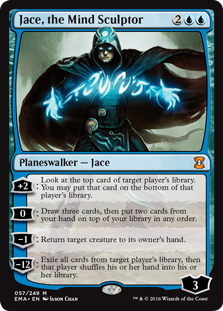
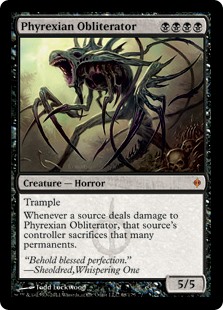
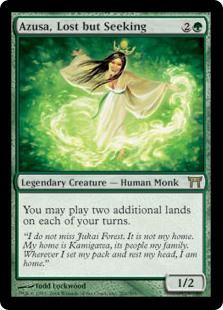
So right off the bat, that means that mythics from Worldwake and New Phyrexia are taken care of, and almost certainly means that Jace, the Mind Sculptor is the only Jace we’ll see in this set. Asuza is at rare.
In trying to round out the list, I tried to pull together a set of cards that were a) in need of reprint, b) make sense in the EV calculations for the set and c) fulfill the nostalgia/MTG history requirements.
I have further assumed a distribution of 2 slots to artifacts and colorless cards, 2 each for the five colors, 2 gold cards and either a land slot or an extra gold or artifact/colorless card.
Without further ado, here are my picks for the thirteen additional mythics most at risk of reprint in Magic: 25.

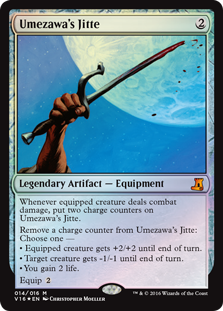

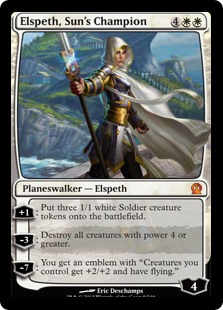
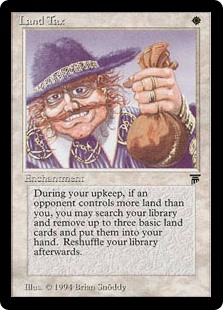
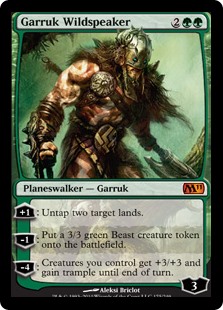
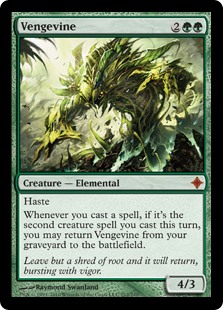

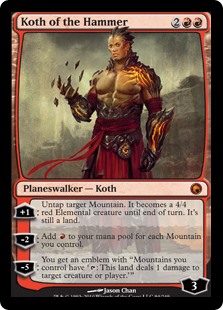
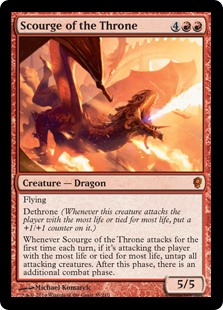

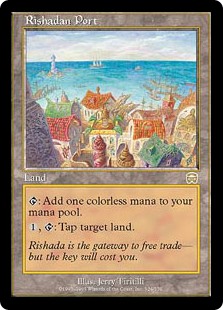
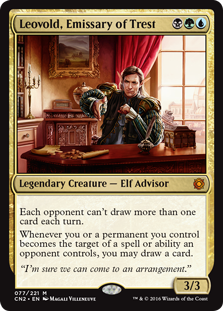
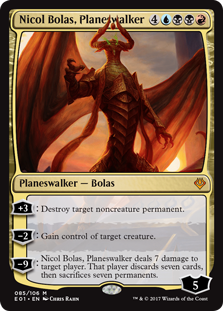
COLORLESS/ARTIFACTS
We already saw some cool art for one of the artifact creatures in the set on the revealed booster packaging, and from the spiky armor it seems likely that the card in question is either Platinum Emperion or Blightsteel Colossus. Other options include something from Affinity, but my best guess is Emperion. If we get another Artifact card at Mythic, I’m thinking it will either be the most busted Equipment of all time in Umezawa’s Jitte or perhaps Batterskull, especially if Stoneforge Mystic makes it into the set. Ugin, the Spirit Dragon could also occupy one of these slots, as iconic Planeswalkers have a role to play here. Mox Opal needs a reprint, but it may not be an easy fit in this set and an equipment option seem a better fit to represent that aspect of the game. Finally, Emerakul, the Aeons Torn is about as iconic as it gets, so it wouldn’t surprise me to see her show up again now.
WHITE
As the poster child for Theros block, Elspeth, Sun’s Champion is a strong planeswalker that most players will be happy to own a copy of, leaving the Theros Gods to show up as a larger cycle down the road where the theme of the set allows. Land Tax hasn’t seen a reprint since 4th Edition, isn’t on the Reserved List and fits the bill on the nostalgia front, so it seems like a solid pick for the other white slot as a super powerful card that many players wouldn’t necessarily already own a copy of and services the EDH market. If it’s not these two, other options include Baneslayer Angel, Stoneforge Mystic or Ravages of War.
GREEN
There aren’t a lot of obvious options for the green mythic slots here. My gut says we’ll end up with some combination of a nostalgia/story card and a Modern staple, hence my timid tabling of something like Vengevine + Garruk, Wildspeaker as cards that could use the reprint and fit into the EV modeling. Alternatives might include cards such as Food Chain or Berserk, but the former seems better suited for an Eternal themed set down the road, and latter was just in Conspiracy and doesn’t need the reprint despite qualifying on nostalgia. Garruk could just as easily be a different version or a Nissa.
BLUE
With Jace already a lock, it’s tough to figure that the second slot is also a big money card, but I can’t shake the feeling that the 25th anniversary set is the perfect place to put the most iconic counterspell up beside the most important iconic planeswalker and just own the fact that blue is the best color in the game. Another option is for True-Name Nemesis to show up here as a cheaper mythic that folks are still going to be pleased to open.
RED
Red is a pretty tough slot to fill at mythic generally speaking and the default here is some combination of a planeswalker and a dragon. Koth of the Hammer hasn’t seen a reprint yet outside a duel deck and anchors a low value slot pretty easily here. Alternately, we could get a Chandra, but I had trouble finding one that made sense here. I would expect that we’ll get Shivan Dragon at rare, so perhaps this slot could go in a different direction, but if I had to pick a mythic dragon that hasn’t been reprinted yet, Scourge of the Throne would be a solid candidate from Conspiracy. Through the Breach certainly needs a reprint, but could show up at rare or not at all. Finally, Imperial Recruiter has been floated for this slot, but I’d be surprised to see them throw such a valuable card in here. Recruiter is an odd duck, as it’s value is almost certainly more about supply than demand, but at $240 retail, even if it fell off 70% for the new version, we’re still talking about a $72 mythic that not many people need or want. It does tick the P3K box though, so we’ll see.
BLACK
Since we know we are already getting Phyrexian Obliterator, we likely just have one slot to fill. My guess is Demonic Tutor gets the nod here, as an iconic tutor effect from the early days of the game that has only seen a reprint in a Duel Deck in the modern era. Alternatively, we could see Imperial Seal here, but at $440+ for the original it runs the same risk of destabilizing the set EV unless it crashes utterly on inclusion. A Liliana version is also an option.
MULTI-COLOR
Assuming that the gold cards earn a couple of slots here, options include a multi-color planeswalker or perhaps a key Legendary card. Some version of Nicol Bolas seems likely at either Mythic or Rare given that he is positioned as the key villain in the narrative at present, so we could end up with Nicol Bolas, Planeswalker in this slot or perhaps the original Nicol Bolas at rare. As for legends in need of a reprint, Leovold, Emissary of Trest could end up representing for Conspiracy 2 but their are a plethora of potential alternatives.
LANDS
Rishadan Port is one of the last remaining $100+ cards not on the Reserved List that has never seen a reprint, but it’s relatively modest demand profile leads me to believe that it is going to get hammered like Karakas was should it see a reprint. As such I’m glad to not be holding any of these. It’s also possible that we don’t get a land slot at all at mythic.
Here are the current price tags for these cards, in order of value:
This set of fifteen mythics would give us a grand total of $553, which is about 17% higher than the value of the MM17 mythics heading into spoilers. If they deliberately juiced M25, this is viable. If not, one or two cards over $30 likely need to be swapped for something closer to $10.
In this list, I would be comfortable continuing to hold Jace, the Mind Sculptor, Force of Will, Emrakul, the Aeons Torn or Demonic Tutor as cards that are likely to be resistant to permanent value loss. The rest of the mythics would face relatively shallow demand.
The Rares
There are a LOT of ways that the rares can play out in this set, with literally hundreds of viable options on the table. That being the case, we are likely better off just making a list of cards in need of reprint and figuring out whether they are likely to rebound once they crash.
Let’s see what we’re dealing with this time around:
There are several cards on this list that are both important within the history of the game and and are also in need of a reprint. Crucible of Worlds was a fan generated card, and is getting pricey, so I could easily see that here. Dark Confidant, Scapeshift, Through the Breach, Chalice of the Void, Engineered Explosives, Bitterblossom, Meddling Mage, Gaddock Teeg, Collected Company, Kolaghan’s Command, Goryo’s Vengeance, Scapeshift and Glen Elendra Archmage all have a role to play and I would expect at least half of those cards to see inclusion.
Reprints of Chalice, Collected Company, Dark Confidant, Collective Brutality, Thalia and Kolaghan’s Command are likely to slow their growth for a while, and the others have more modest demand overall.
I think we’ll see Birds of Paradise at rare rather than seeing Noble Hierarch again given the all time iconic nature of the card.
My guess for a potential rare land cycle is the Worldwake creature lands, since Celestial Colonnade and Creeping Tar Pit need a reprint and the rest of the cycle is cheap enough to prevent their inclusion from taking up too much EV. Alternatives include the filter lands, the SOM fast lands or even pain lands. Shocks and fetches feel marked for future handling elsewhere since we seem to be returning to Ravnica in the fall and a Modern focused Masters set is likely inevitable in 2019, whether or not they theme it that way.
Finally at common or uncommon I would expect to see Swords to Plowshares, Terror, Lightning Bolt, Giant Growth, Counterspell and a pile of other nostalgia laden minor inclusions.
Stay tuned this week as the spoilers are unveiled, cutting out options and activating fresh specs. Good luck!
